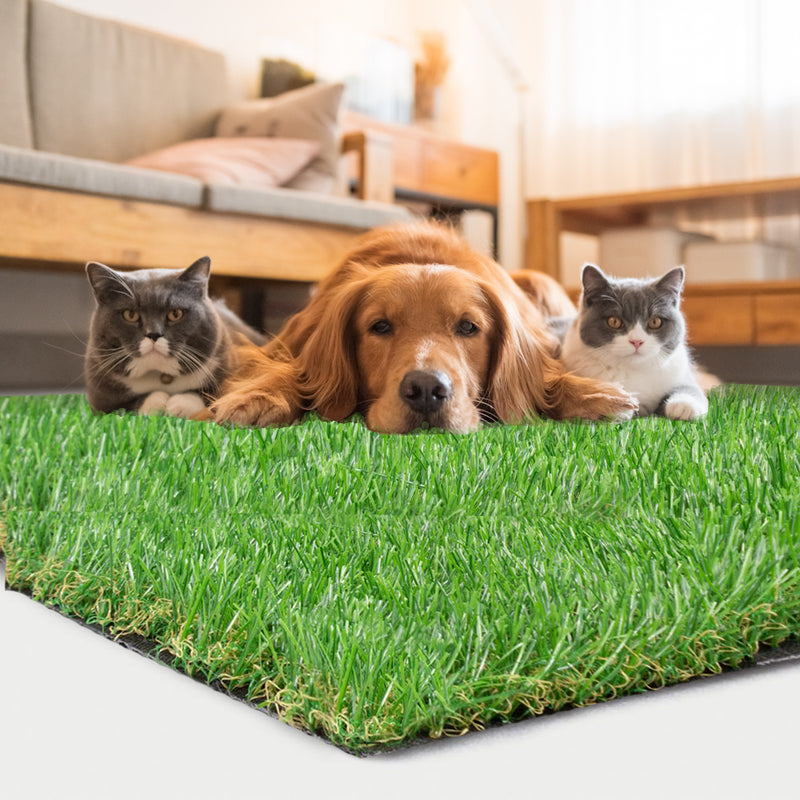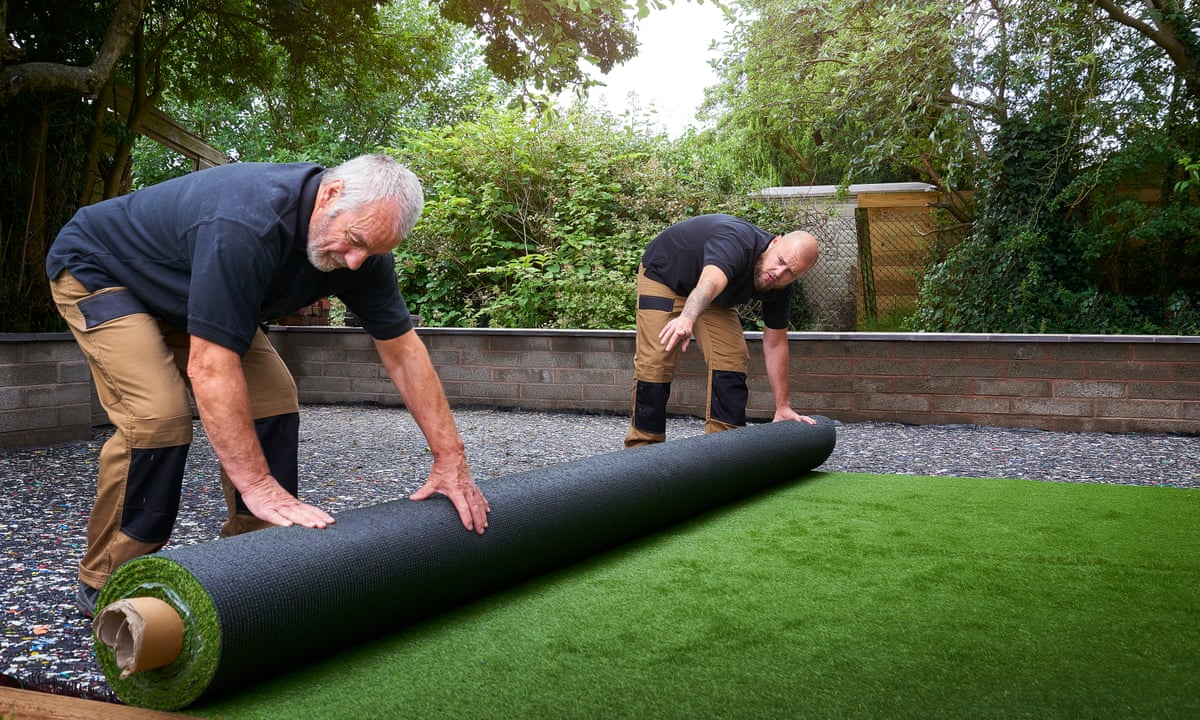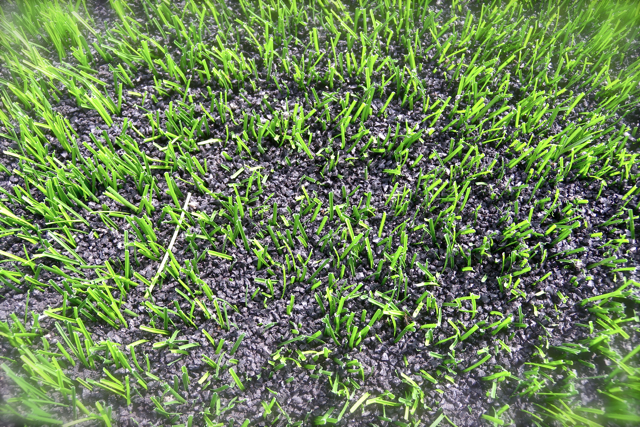Delve Into the Environmental Benefits of Opting for Synthetic Grass Solutions
The fostering of synthetic lawn solutions provides an engaging possibility to attend to pushing environmental challenges. By substantially reducing water use and lessening the application of hazardous chemicals, these options not just advertise sustainable landscaping however also shield local ecological communities.
Water Conservation Conveniences
One of the most significant advantages of man-made grass is its ability to preserve water. In contrast, artificial turf does not require watering, significantly lowering the total need for water resources.
By getting rid of the demand for regular watering, man-made turf adds to lasting landscape practices and assists minimize the environmental effect of too much water consumption. The conservation of water prolongs to the decrease of runoff, which can lead to soil disintegration and river pollution.
Furthermore, the installation of fabricated turf allows property owners and communities to designate water sources extra successfully, concentrating on important uses such as drinking water and agriculture. The shift towards synthetic grass not just advertises liable water use however additionally straightens with more comprehensive environmental goals aimed at protecting natural deposits.
As communities increasingly focus on sustainability, the water conservation benefits of artificial turf offer an engaging situation for its adoption in business and household landscape design projects.
Reduced Chemical Use
The change to synthetic grass substantially reduces the reliance on chemical therapies typically used in all-natural yard maintenance. Traditional lawn monitoring commonly includes the application of herbicides, fertilizers, and pesticides to promote development and control insects. These chemicals can position threats to human wellness, regional wild animals, and the environment, adding to soil and water contamination.
In comparison, synthetic grass gets rid of the need for these hazardous compounds. Once mounted, it needs marginal upkeep, mostly containing routine cleansing and irregular infill replenishment. This decrease in chemical use not only profits the immediate atmosphere yet also contributes to more comprehensive ecological security. By decreasing the release of synthetic compounds right into the ecosystem, synthetic grass advertises much healthier soil and water systems.
In addition, the lack of chemical runoff related to synthetic grass setups aids shield neighborhood rivers from air pollution, sustaining marine life and keeping biodiversity. Artificial turf companies phoenix. As neighborhoods progressively prioritize sustainable practices, selecting synthetic grass presents a sensible remedy that straightens with environmental preservation goals. Through this change, homeowner can delight in lush green spaces without endangering environmental health and wellness, paving the means for a much more sustainable future
Lower Carbon Impact

Additionally, the installment of synthetic grass can result in considerable water preservation. All-natural lawns need substantial amounts of water for irrigation, which not just includes in the carbon footprint related to water removal and therapy but likewise pressures local water resources. On the other hand, synthetic grass needs very little upkeep, requiring no watering, thus significantly decreasing water use and its linked power prices.
Additionally, the durability of synthetic grass contributes to its decreased carbon impact. With a more info here life expectancy of up to 15 years or even more, the need for regular substitutes is reduced, resulting in much less waste and reduced power consumption in manufacturing and throwing away standard yard alternatives. Overall, synthetic grass offers visit homepage a lasting choice for ecologically mindful landscape design.
Environment Preservation
Habitat preservation is a critical consideration in the discussion over landscaping selections, specifically when comparing synthetic grass to natural yard. All-natural turf yards usually call for considerable maintenance, including making use of chemicals, plant foods, and herbicides, which can negatively impact regional ecological communities. These chemicals can seep into the soil and waterways, damaging indigenous vegetation and animals and interrupting local environments.
In comparison, synthetic lawn presents an opportunity to reduce the eco-friendly impact of landscaping. By choosing try this out synthetic turf, property owners can minimize the disturbance of natural environments connected with traditional grass treatment methods. Synthetic grass removes the requirement for damaging chemicals, thus protecting close-by wild animals and keeping the integrity of surrounding ecological communities. Furthermore, the installment of synthetic grass can lead to the conversion of former lawn locations right into more biodiverse landscapes, such as pollinator gardens or native plant areas, which can sustain neighborhood wild animals.
Eventually, the shift to synthetic grass not just conserves water and decreases maintenance efforts but also fosters a more harmonious connection between human activities and the natural surroundings, advertising environment preservation at the same time.
Long-Term Sustainability
Long-term sustainability is an essential element in evaluating the benefits of man-made lawn over traditional yard lawns. Among one of the most considerable benefits of synthetic grass is its toughness; it can last as much as 15-20 years with minimal upkeep, whereas natural lawn needs constant reseeding and replacement. This long life minimizes the need for consistent resources, such as water, plant foods, and pesticides, which are crucial for preserving a healthy and balanced turf yard.
Furthermore, synthetic grass contributes to a decrease in carbon emissions connected with grass care tools. Conventional grass typically call for gas-powered lawn mowers, leaners, and blowers, all of which add to air pollution. Turf installation phoenix az. In contrast, synthetic grass eliminates the requirement for such tools, promoting a cleaner atmosphere
In addition, the production of man-made lawn progressively makes use of recycled products, enhancing its sustainability profile. As makers take on environment-friendly techniques, the ecological footprint of synthetic grass continues to decrease.

Verdict
The fostering of fabricated turf solutions presents considerable environmental advantages, including considerable water conservation, decreased reliance on dangerous chemicals, and a reduced carbon footprint. Artificial turf aids in preserving natural habitats by reducing land disturbance and advertising lasting sustainability via the usage of resilient materials. Collectively, these variables underscore the potential of synthetic grass to add positively to ecological health and provide a sensible option to standard landscaping techniques in an increasingly resource-conscious globe.
In contrast, man-made grass does not need watering, significantly lowering the general demand for water sources. By reducing the launch of synthetic substances into the ecological community, man-made turf advertises healthier dirt and water systems.
Additionally, the installment of synthetic lawn can result in considerable water preservation. In contrast, fabricated turf requires minimal maintenance, requiring no watering, consequently significantly minimizing water usage and its connected power costs.

Comments on “Top-Grade Arizona Turf Options for a Stunning and Green Landscape”